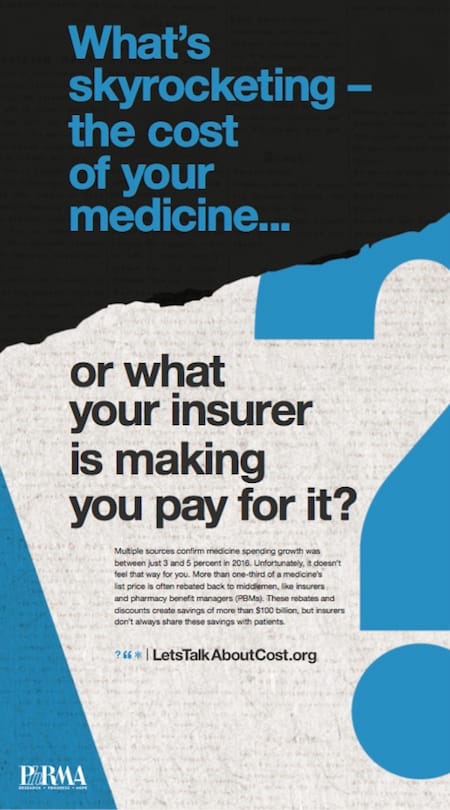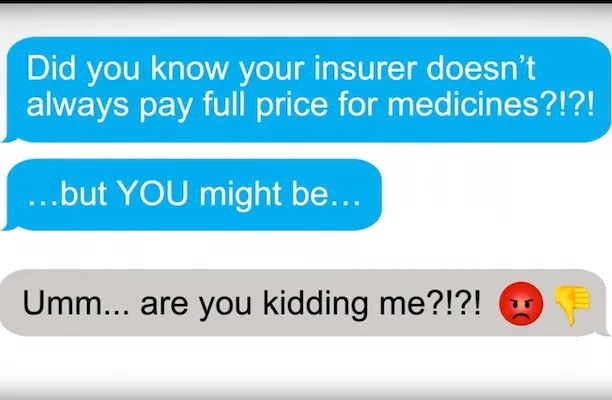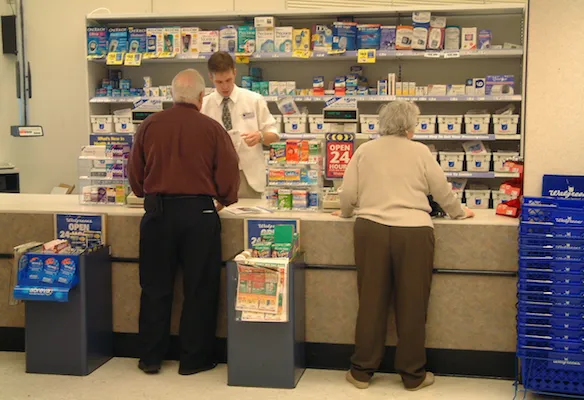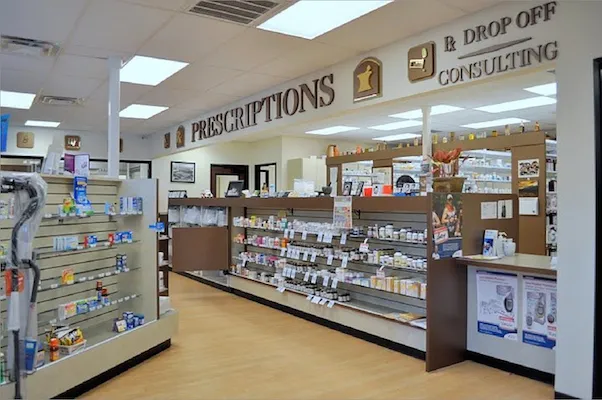A new website from the Pharmaceutical Research and Manufacturers of America (PhRMA) aims to give consumers a better grasp of why prescription drugs cost so much in the United States.
Launched this week, the LetsTalkAboutCost.org site takes an interactive approach by engaging visitors in a Q&A about the cost and coverage of prescription medications, with a goal of providing easy-to-understand information plus links to additional resources for consumers who want to find out more about prescription drug costs.

LetsTalkAboutCost educates consumers about drug spending and pricing trends, insurance coverage of prescriptions, the biopharmaceutical supply chain, hospital markups of medications and related issues regarding health care costs.
Visitors to the site can also take a drug cost quiz to test their knowledge of what’s behind prescription drug pricing. Participants are asked who decides what you pay for your medicine, what percentage of insured patients pay out of pocket based on the list price, what are the majority of health care dollars spent on, how much did spending on medicines purchased at the pharmacy counter grow in 2016 and how much are hospitals marking up the cost of medicines? (Go to LetsTalkAboutCost.org for the answers.)
“While spending on retail medicines grew just 1.3% in 2016, according to new National Health Expenditures data, unfortunately it doesn’t feel that way for consumers. More than one-third of a medicine’s list price is often rebated back to middlemen, like insurers and pharmacy benefit managers (PBMs),” wrote Holly Campbell, deputy vice president of public affairs at PhRMA.
“These discounts and rebates create savings of more than $100 billion, but insurers don’t always share these savings with patients,” she explained. “The new site walks through this information and includes resources and reports to help consumers better understand the dynamics of the competitive marketplace for medicines.”
The new website is part of PhRMA’s “Let’s Talk About Cost” campaign. Also on the site is a blog and an ad gallery, which include videos, a radio ad and print ads focusing on how PBMs, insurers and hospitals influence the cost of medicines for consumers.
Late last year, PhRMA released a report that took a closer look at what determines the amount patients end up paying for a branded prescription drug.
Titled “Follow The Dollar,” the report explains how the prices wholesalers, pharmacies, PBMs, insurers and patients pay for a medicine all vary and are shaped by negotiations in the biopharmaceutical supply chain.
Perhaps more telling for consumers, the PhRMA report gave hypothetical patient examples depicting the money flow through the drug supply chain when a medication is purchased with a co-pay, co-insurance or deductible.
One example told the story of patient “Scott,” who takes insulin with a list price of $400. Because the market for insulin is highly competitive, his insurer is able to negotiate a 65% rebate. After these negotiations, the biopharmaceutical company keeps just $88. Since Scott hasn’t reached his deductible, his insurer does not cover any of his costs. Despite this, his insurer still earns the $239 rebate it negotiated with the biopharmaceutical company. Yet Scott still has to pay an amount close to the list price: $408.
“Many Americans are struggling to afford their medicines and have important questions about their medicine costs,” the intro on the LetsTalkAboutCost.org site reads. “Here we address these questions by exploring trends in medicine spending, how insurers cover medicines, the role of middlemen like pharmacy benefit managers and what the biopharmaceutical industry is doing to make medicines more affordable.”









